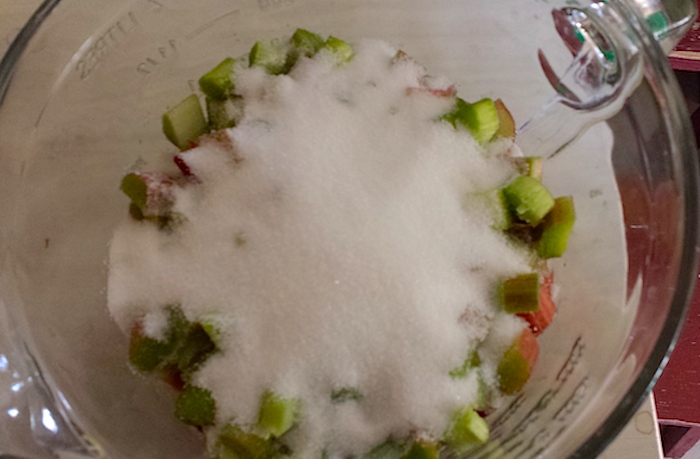When I moved to the farm after 13 years of living in the city, my grandmother suggested I start small. You know, small garden, only a few chickens, don’t bite off more than you can chew…I didn’t really listen. Maybe I should have. But now, almost three years into my prairie farm life, I think it might be too late to heed her wise advice…
Spill the beans is a weekly column chronicling my attempts at a self-sufficient life on this small prairie farm.
***
In the fall of 2013, someone tilled over my rhubarb. I was devastated. Rhubarb, to me, was one of the quintessential components of the old-fashioned farmyard that I was trying very hard to curate. I mean, I knew I could go to the garden centre next year and buy a lovely rhubarb plant that would last me many wonderful years. But I also knew that it definitely put me back a few years in realizing my dream of a rhubarb patch consisting of rhubarb plants that were six feet tall and twenty feet wide, with leaves large and heavy enough to house either toddlers or for grown-ups to use as umbrellas.
Of course, there was also this niggling farming legend that I kept hearing from my elders, from my workmates and from gardening blogs, that rhubarb, despite being abused by negligent (I protest!) gardeners, may still come back the next year. I was skeptical. The person who tilled my garden used a TRACTOR with a heavy tiller.
And then…fast forward to spring 2014.

Tiny, greenish-yellow bulbs appeared in two places in the garden. And sure enough, about a month later, instead of one rhubarb plant, just where I planted it, I had two rhubarb plants growing rogue in the garden. And you will soon learn that I am all about the rogue plants, tenacious enough to survive the winter and come up in the spring; be it tender perennial herbs that have no business coming back, lettuce and tomatoes that have self-seeded the previous fall or rhubarb plants that get tilled into the ground and redistributed by some well-meaning farmer.

This year, I am well on my way to the aforementioned giant rhubarb plants that I have been imagining since moving to the farm.
And so I look for ways to use my rhubarb. Here are my favourites:
Rhubarb Juice
(recipe adapted from the Mennonite cooking bible known as the Mennonite Treasury – published in 1953 and still going strong with little or no change since the beginning)
*Warning: This recipe contains no measurements. This is what I like to refer to as the “grandmotherly” way to share recipes. If that freaks you out, feel free to move on to the second recipe.
Fill a pot with chopped up rhubarb. Fill the pot with water. Heat pot with water and rhubarb on the stove at medium-high heat. Cook until rhubarb is mushy. Mash rhubarb with potato masher. Strain juice through cheesecloth or chinois sieve. Put juice back into pot and add sugar to taste. I would start with 1 cup of sugar for about 6 cups of juice. Heat until sugar is dissolved.
Use within 3 days or freeze in 500 mL containers and thaw when needed. This juice makes an excellent mix with gin and tonic. Or vodka and 7-up. Or beer (kind of like a radler but with rhubarb). Or, while still partially frozen, mix with sparkling water as a homemade slush.

Rhubarb Compote (adapted from www.marthastewart.com)
6 cups rhubarb, chopped
1 cup of white sugar
1-inch piece ginger
Mix rhubarb and sugar in a large saucepan. Let sit for about ten minutes until rhubarb starts to release some liquid.
Set saucepan on medium-high heat and bring to a boil. Turn heat down to medium-low and simmer for about five minutes until rhubarb is cooked and soft, but there are still some whole pieces.
Martha would have you cut up your ginger into small pieces, place it in a fine mesh sieve and press it over a small bowl to collect the juices. I’m going to tell you that is a waste of time and energy. In fact, don’t even use a whole 1-inch piece of ginger. I used about 1/3 of the chunk, peeled it, diced it finely and added it to the rhubarb while it was cooking. The ginger flavour was lovely. And the process was WAY simpler.
Serve warm over ice cream or allow to cool and serve over yogurt or on toast.

***
Jamie Dyck is waiting for summer vacation. Follow her on twitter, @jndyck.
